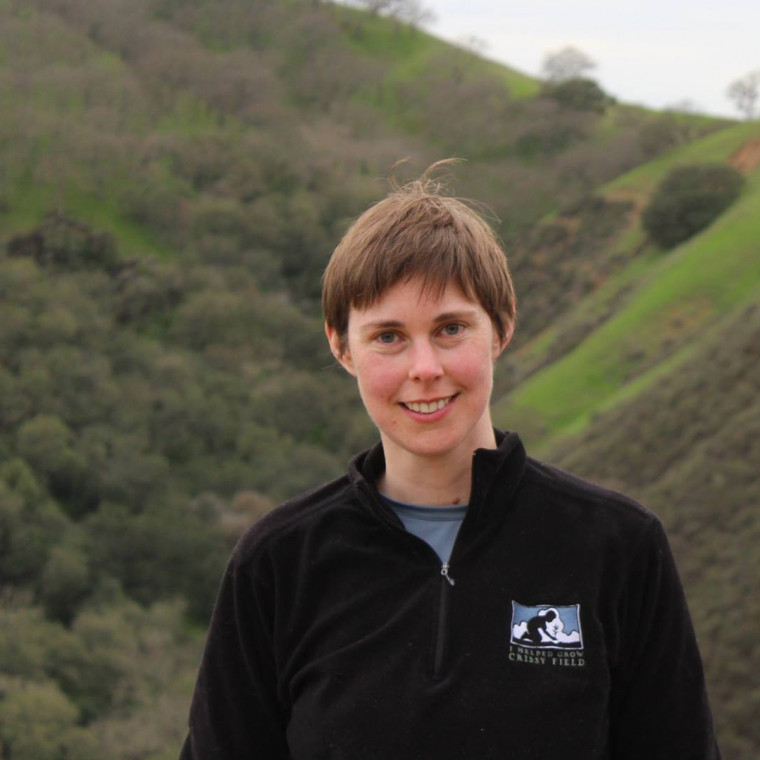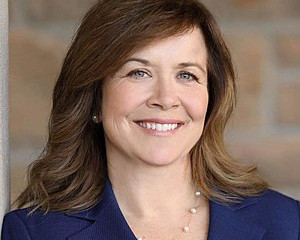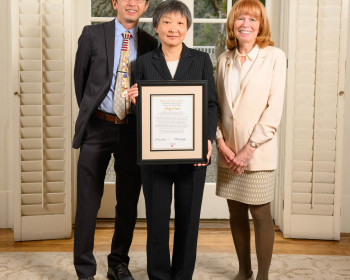Profile of a Protector: Alumna Jenny Loda ’12
Open gallery

Jenny Loda ’12 is a staff attorney for the Center for Biological Diversity in Oakland, California, where she works to protect rare amphibians and reptiles across the country. Prior to attending Lewis & Clark Law School, Loda worked on wildlife research and habitat restoration in California, Hawaii and Iowa. She also completed a master’s of science in wildlife biology from Iowa State University, and a bachelor’s in ecology, behavior, and evolution from the University of California, San Diego. Before joining the Center for Biological Diversity, she ran her own law practice focused on sustainable business and environmental law and held numerous internships. In her spare time, she likes to hike, camp, cook, garden, and play with her niece.
How did you become interested in environmental issues?
JL: My interest in environmental issues grew out of the love that I had for animals as a child. Also, I grew up in a rural part of the San Francisco Bay Area and became very aware of environmental issues as I witnessed an incredible amount of development and increasing suburbanization around me. As we lost open space, I saw more wildlife being pushed into our rural area and became concerned about how the loss of habitat would affect them. This led me to major in ecology, behavior and evolution as an undergrad and eventually led me to study environmental law.
How exactly did that lead you to law school?
JL: I have always loved science but my passion for conservation was also a driving force behind my decision to pursue ecology. I eventually became disenchanted with this path because it seemed to be such a difficult route to actually make change, and I saw how science was often being ignored in politics and in many governmental decisions. I started paying closer attention to environmental nonprofits that were working in policy and law to get things done and was inspired to become a lawyer myself. I studied amphibians and issues related to amphibian declines in grad school, and my concern about the continuing declines of amphibians pushed me to want to play a more active role in making change and to work on the issues impacting amphibians to help stem the declines.
Why did you choose to attend Lewis & Clark Law School?
JL: I chose to attend Lewis & Clark because it is the best school for environmental law. I was drawn to all of the practical experiences offered at Lewis & Clark, including the ability to start doing environmental work right away with the Northwest Environmental Defense Center (NEDC) as a 1L student. When I visited the campus I found the students to be very friendly and was happy to learn that students at L&C tended to help each other out, rather than be ruthless competitors, and I found this to be the case during my time there.
Did you have any experiences in law school that were significant in your career or academic path?
JL: All of the practical training experiences that I had at Lewis & Clark influenced me, including Environmental Litigation and Environmental Moot Court and my involvement with NEDC and Earthrise Law Center. I knew going into law school that I wanted a path in wildlife law, and I was specifically interested in working on amphibian decline issues. My experiences at Lewis & Clark gave me the training I needed to do that, and as a coordinator for the Lands & Wildlife Project Group for NEDC I was given the freedom to be able to work on the specific issues that mattered most to me.
Was there a professor that particularly influenced you?
JL: All of the professors in the environmental law program were inspiring, but I worked most closely with Dan Rohlf and Tom Buchele.
How did you end up working for the Center for Biological Diversity?
JL: When I was waiting for my bar results I volunteered with an attorney at the Center who was in the role that I am in now. I was a fan of the Center because of their combination of science and law and their broad interest in all species, not just the fluffy, cuddly looking ones. I was regularly impressed by their ability to get things done and so I continued to follow them and applied for several jobs before my position as Amphibian and Reptile Attorney became available. I was uniquely qualified for the position with the combination of my scientific background working on amphibian declines and my legal experience.
What kind of projects do you work on now?
JL: I work on a wide range of projects which include updating the US Fish and Wildlife Service on current science to support species listings under the Endangered Species Act; comment letters to public agencies critical of environmental reviews under CEQA and NEPA; and investigating and sometimes litigating Endangered Species Act cases to ensure endangered species are getting the protections they need.
Read a recent press release about Jenny’s work on behalf of the California tiger salamander.
What do you enjoy about your work?
JL: The main thing I enjoy is that I am working on issues that I am really passionate about and that are really what I went to law school to do. I like that I get to do a wide range of things. In my role, I am a lawyer, a scientist, a campaigner, and a media person.
What advice do you have for prospective students considering environmental law?
JL: Get as much experience as you can and get to know the attorneys working in the field – Lewis & Clark offers so many opportunities you can take advantage of. For students getting ready to graduate, my advice is to not give up if you aren’t able to find an environmental law job right away. It’s a tough market, but if you really want to be an environmental lawyer find other ways to temporarily make an income and don’t give up. It was almost three years after graduating before I found my current job. Prior to that I worked for an environmental consulting firm I’d worked for before law school, I had my own law practice, and I did document review work with legal temp agencies. Look into volunteering on the side – if you know nonprofit attorneys in the field doing the type of work you like, then ask if they need any volunteer help because they could likely use occasional help on a case or may introduce you to another attorney.
Read about more Lewis & Clark law alumni currently working at the CBD including:
Justin Augustine ’03
Lori Ann Burd ’09
Marc Fink ’95
Brett Hartl ’10
Kristen Monsell ’09
Jamie Pang ’14
Stephanie Parent ’92
Tanya Sanerib ’02
Sarah Uhlemann ’05
Find out more about Lewis & Clark’s environmental law program and what our alumni are doing.
Law Communications is located in room 304 of Legal Research Center (LRC) on the law Campus.
MSC: 51
email jasbury@lclark.edu
voice 503-768-6605
Cell: 626-676-7923
Assistant Dean,
Communications and External Relations, Law School
Judy Asbury
Law Communications
Lewis & Clark Law School
10101 S. Terwilliger Boulevard MSC 51
Portland OR 97219

